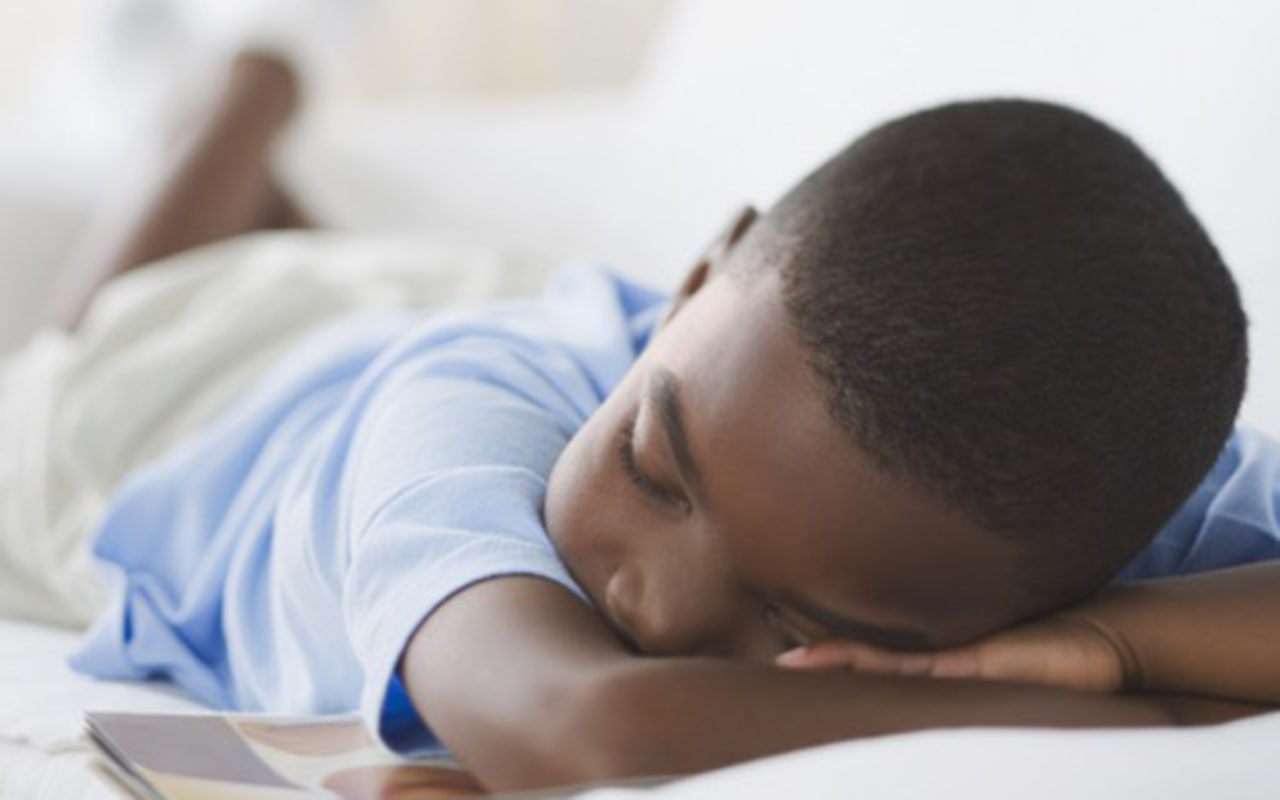It’s 10:00 pm, and you’re getting yourself ready for bed after a long day. You’ve locked the doors, closed the blinds, and set your alarm. Then suddenly, you hear movement. As you reach for the baseball bat next to your bed, your child stumbles into view with a vacant look on his face. You call his name, but he doesn’t answer. He certainly looks awake, but is he?
If you’ve found your child standing, dazed, in the middle of the living room hours after going to bed, you probably have some questions, and we are here today to answer some of the most common ones.
Q: How can I tell if my child is sleepwalking?
A: Interestingly, even if your kid isn’t getting out of bed and moving around his room, he might still be sleepwalking. In addition to moving around the house, sleepwalking behaviors include talking in their sleep, sitting up in bed and making repetitive gestures like fumbling with pajamas buttons, not answering when you speak to them or giving bizarre answers, and having a hard time waking up. Incidences of sleep terrors, sleep apnea, and bedwetting sometimes occur during sleepwalking episodes. Some older kids and teens have also been found outside the house or attempting to start the car, though generally, a lack of coordination prevents sleepwalkers from getting very far.
Q: What causes sleepwalking?
A: This is probably one of the most common questions regarding sleepwalking, and the frank answer is that it depends. Sleepwalking often runs in families, so if you were active while you slept, your child could take after you. It can also show up when kids are under increased stress or during an illness. Additionally, some medicines can cause sleepwalking episodes, and being overly tired could be another contributing factor.
Q: Should I be worried?
A: Sleepwalking in childhood is a fairly common event, with some studies claiming that it manifests at some point in almost 30% of children. The typical age range for sleepwalkers is between eight and thirteen years old, and episodes usually last less than 15 minutes. Most kids outgrow their sleepwalking tendencies by their early teen years, and even if the episodes last into the late teen years or adulthood, there isn’t necessarily cause to worry.
Sleepwalking by itself isn’t automatically harmful, but the act of moving around while being asleep could injure a child. Fortunately, there are some things you can do to minimize the hazards associated with sleepwalking.
Q: What can I do to help my kid?
A: There isn’t a tried-and-true way to stop sleepwalking, so your best course of action is to prepare and prevent as much as possible.
Preparing your home for sleepwalking episodes takes away a lot of the danger associated with midnight meanderings. You should start by putting any dangerous or fragile objects out of reach. Remember, your child is only partially awake, and he isn’t likely to go searching for a key if a door is secured. Then you could install baby gates at the top of the stairs to lessen the likelihood of tumbling down. Additionally, motion sensors or a baby monitor can help alert you if an episode is happening, so you can take measures to keep your child safe. Installing alarms on windows and putting a lock up high on outside doors can also prevent your child from escaping out into the elements.
One of the biggest dangers to a sleepwalking person is tripping and falling. Each night, you should clear a path for your sleepwalker, so he doesn’t stumble during his late-night excursions. That means picking up clutter from the bedroom floor (we know, easier said than done!) and making sure there is a clear path in the hallway. If your child sleeps in a bunk bed, make sure they start the night on the lower bunk to prevent a nasty fall.
Most kids will outgrow sleepwalking by the time they are teens, but visit your child’s pediatrician if you are concerned. In extreme cases, your pediatrician may suggest some behavior strategies and medications, but most of the time, they will recommend keeping your child safe by removing obstacles until they outgrow sleepwalking. They might also suggest that you modify your child’s sleeping routine to keep him from getting overly tired. If your kid won’t sleep through the night and that’s causing him to be overtired, don’t hesitate to contact one of our kid sleep coaches.
Q: Should I attempt to wake my child?
A: Generally, sleepwalking episodes happen within an hour or two after a child goes to bed, so you’ll likely be awake during at least one episode. It can be jarring to see your child bumbling around with a glazed expression on his face, and you might want to try to snap him out of it. But don’t. The best way to help your sleepwalking child is to gently guide him back to his bed and wait until he begins resting again. It isn’t necessarily dangerous to the child if you wake him, but it can be disorienting, so it’s best not to.
There you have it! If you have any additional questions about childhood sleepwalking, please get in touch with one of our fantastic pediatric sleep consultants today.


